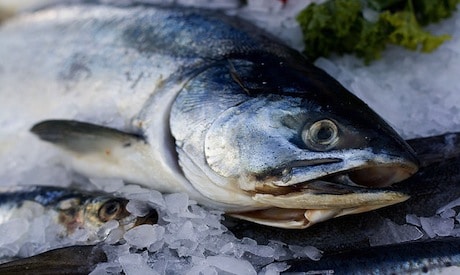
With AquaBounty's AquAdvantage genetically engineered salmon likely to be the first GMO animal approved for human consumption in the U.S., concerns are increasing over the impact this fish could have for human health and the environment.
Already, several major U.S. retailers including Giant Eagle, Trader Joe's and Whole Foods Market have pledged not to sell the fish when it becomes available. Among the major concerns beyond the possible harmful effects on the humans who eat the fish, are the potentially devastating environmental impacts the fish could have on marine ecosystems. While AquaBounty states that the engineered fish will be sterilized, the process is not full proof and a small percentage of the fish will remain fertile.
Read more about GMO salmon
A new study published in the journal Proceedings of The Royal Society B, found that the genetically engineered salmon have the potential to breed with both Atlantic salmon and wild trout species. Their offspring shows the ability to grow even faster than their genetically modified parent(s). The fish would grow an average of 80 percent faster than other salmon varieties, with much larger appetites as well. And that has environmentalists and scientists concerned.
If the AquAdvantage salmon were to escape their fish farms (a frequent occurrence in open water fish farms) and begin breeding, their design for rapid growth and increased size could devastate ecosystems by dominating the food supply. According to Dr. Krista Oke, the study's lead author: “Although transgenic hybrids would likely be rarer in the wild than in our experiment, our results indicate that transgenic hybrids have a competitive advantage over salmon in at least some semi-natural conditions. If this advantage is maintained in the wild, transgenic hybrids could detrimentally affect wild salmon populations.”
The AquAdvantage salmon is engineered with genes from a Pacific Chinook salmon and a promoter from an ocean pout. The fish can grow year-round, reaching market weight in a fraction of the time it takes regular fish.
Read more about genetic engineering
Image: Shinsuke JJ Ikegame

